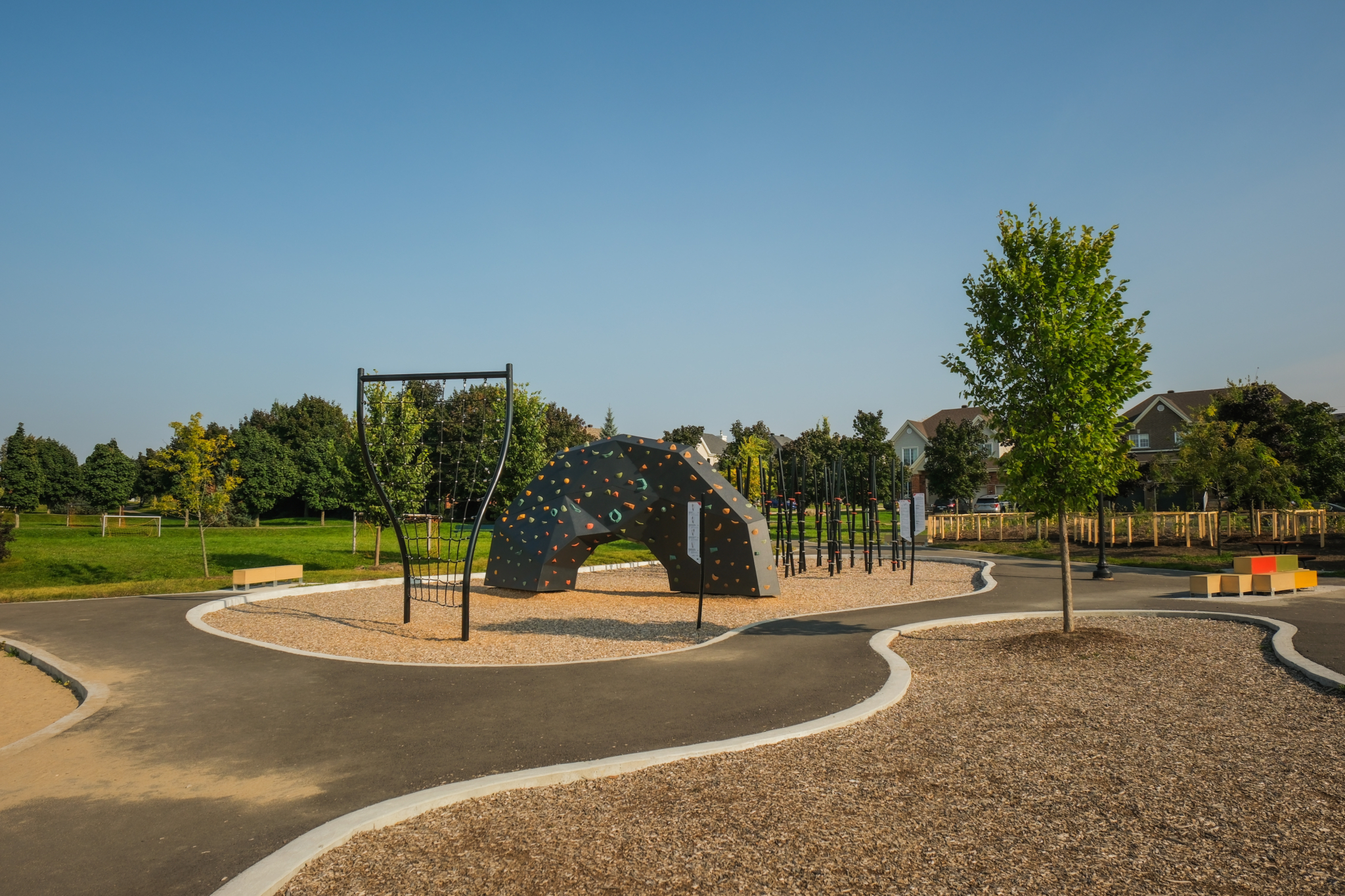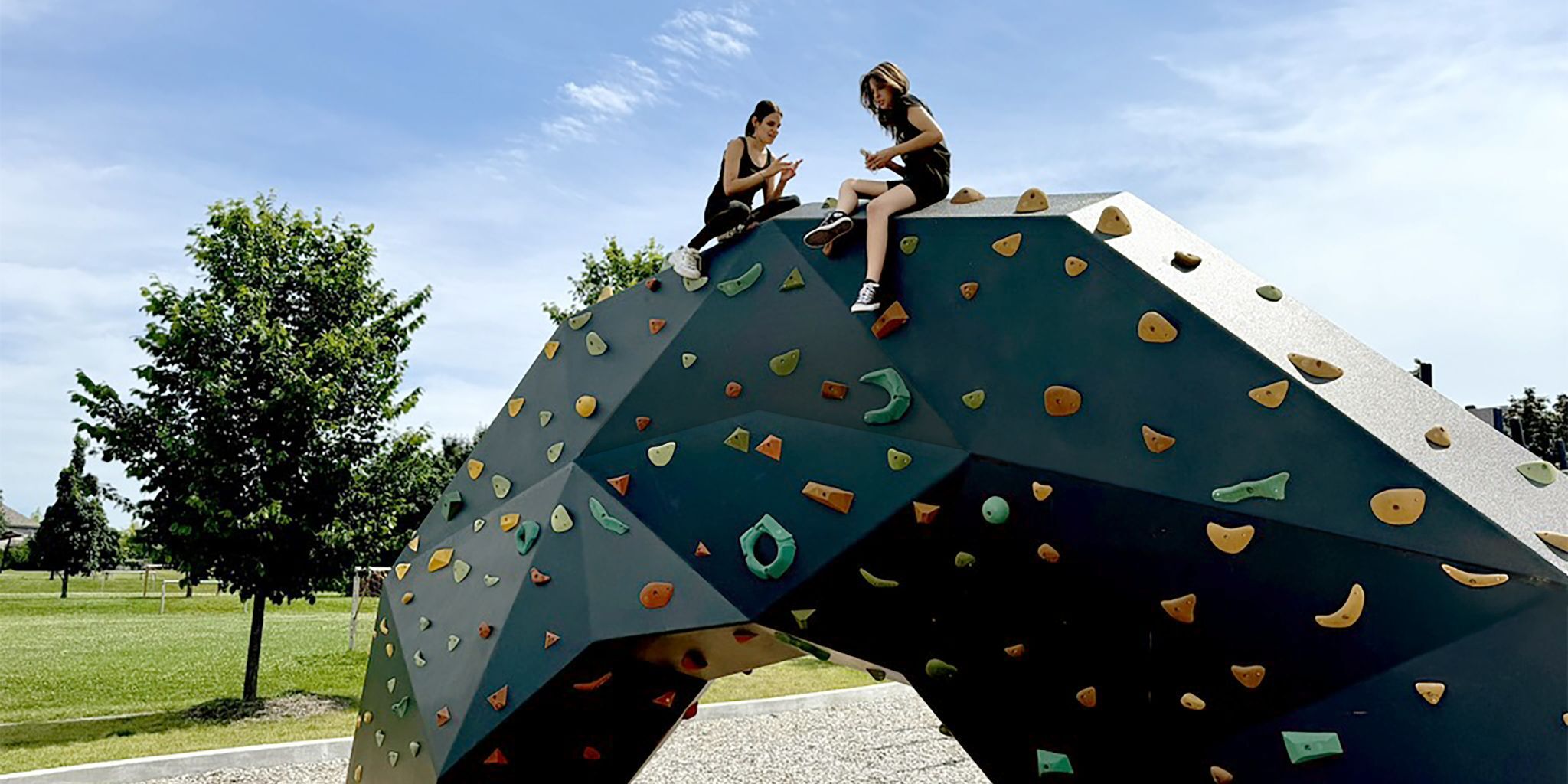Healthy Seniors by Alexandre Paré
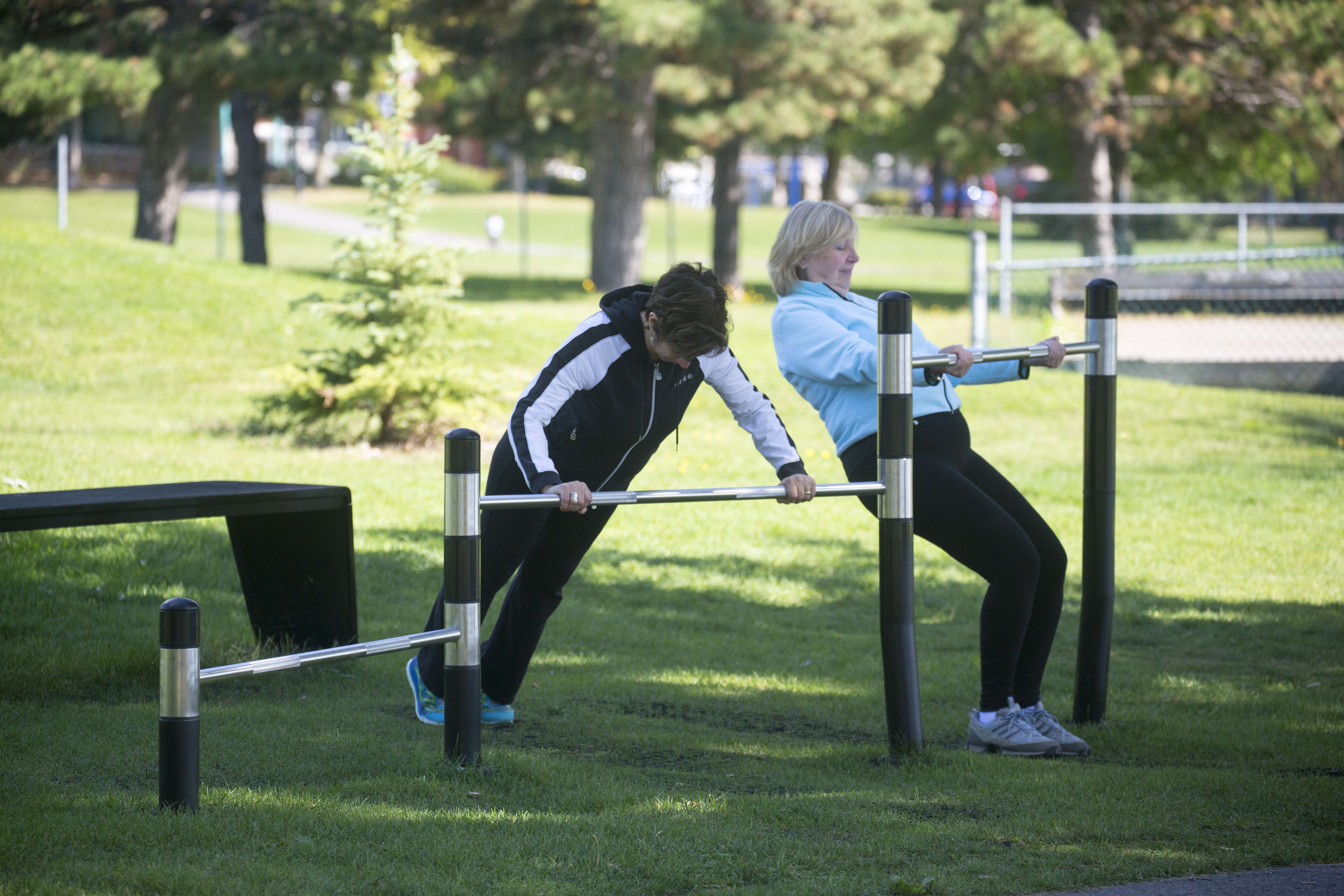
Healthy Seniors by Alexandre Paré
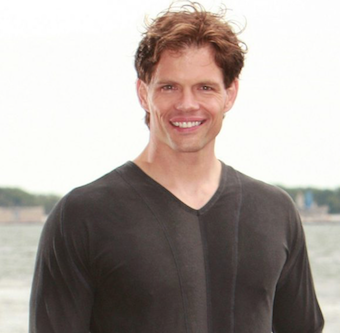
The problem with aging is not advancing in age but rather succeeding in doing so with the least possible decline of human functions. It is precisely with this in mind that the following text refers, more specifically, to the musculoskeletal benefits associated with an active lifestyle for aging people.
As of July 2018, Canada had more than six million people aged 65 and over. These people represented 17.2% of the country's population, or one in six Canadians. In the current vision of aging, physical activity is a leading public health measure to counter the physical deterioration and decline in functional ability of older people, as well as the development of the major chronic diseases associated with aging. (1)
In the general population, falls account for 29% of hospitalizations, but they are mostly concentrated among seniors. In fact, falls account for 62% of hospitalizations for this group of citizens and cause 90% of fractures (11). According to the Public Health Agency of Canada, a reduction in falls of 20% among seniors would generate a saving of $ 138 million dollars per year (11).
In general
Physical activity is one of the best ways to improve the mobility and independence of older people (1). After the age of 30, many of the body's functions decline by 2% / year in a sedentary individual. On the other hand, among active persons, this loss of capacity is only 0.5% / year. A 90-year-old person will have lost 70% of his / her capabilities while remaining sedentary but only 30% if he / she is active regularly (3).
Longevity
People who have been little active for part of their life and who begin to engage in regular physical activity will benefit from a noticeable improvement in their functional ability especially due to the reduction of chronic diseases. This advantage increases longevity because the greater the volume of physical activity, the lower the risk of premature death (1-9).
Muscles
For a long time it was believed that lifting relatively heavy loads was reserved for healthy young adults. Many people have endorsed this theory because the observation of natural aging confirms that between the ages of 30 and 80, the muscle mass decreases by 30 to 60% (1). In the elderly, the phenomenon of decreased muscle mass, which is called sarcopenia, occurs at an average rate of 5% per decade between the ages of 25 and 50, and 10 to 15% per subsequent decade (1-4). Chart-1 illustrates this phenomenon well.
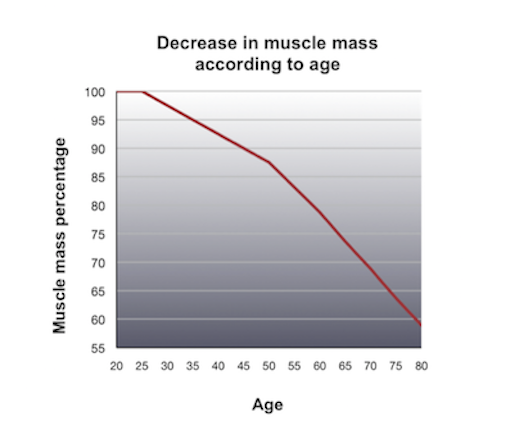
Muscle atrophy is caused mainly by a gradual and selective non-use of muscle fibers, especially those with rapid contraction. This results in a loss of strength and muscular endurance that is not due, as one would like to believe, to a normal consequence of aging, but rather to a large extent to the chronic physical inactivity that usually accompanies advancement in age (1-3). If nothing is done as a strength training program, the force will decline by 15% per decade between 60 and 79 years and by 30% after the age of 80 years (4).
Falls among seniors
The most important consequence of elder sarcopenia is undoubtedly the increase in the probability of falling. The current scientific literature is clear on this subject; the strength of the lower limbs is inversely proportional to the risk of falls (1-4-10). Other factors predisposing to falls are among other things; to have a precarious balance, reduced mobility, difficulty walking and being sedentary (1). It is noted that after the age of 65, one in three people falls at least once a year and this proportion affects women more than men (1). With these elements, we can see that the prevention of falls fits into 3 important actions:
• Increased muscle strength; especially legs and also the whole body (1-3-7-10).
• Practice specific exercises soliciting balance (3-7).
• Improved postural stability (toning of the trunk and back muscles) (1).
Muscular strength
Of the modifiable physiological qualities, strength is certainly the one that represents the most dramatic improvement potential. Several studies have shown gains in strength following a muscle training protocol consisting of exercises with body weight or devices (1-4-9-12-13).
The results are varied but they oscillate between gains of 30% to 100%, and this in 3-4 months of muscle training (4-9). The age of the participants usually varies between 60 and 80 years and they use loads equivalent to 50% of their maximum capacity during the first weeks, then increase this percentage to 80% towards the end of the experiments.
The 2 most spectacular studies were conducted by Fiatarone in 1990 and 1994 with men and women aged on average 90 and 87 years respectively. After 8 weeks of quadriceps training, 90-year-olds saw their strength increase by 174%, their muscle mass increase by 9% and their walking time by 48%. For 87-year-olds, their strength has increased by 113% and muscle mass by 3%.
These results demonstrate that it is not necessary to obtain muscle hypertrophy to improve muscle strength and that at any age of life, human skeletal muscle reacts positively to the stimulus to which it is subjected. Contrary to what is conveyed, the use of lightweight weight training for seniors gives very little result in terms of both strength and prevention of osteoporosis (5-9). It is recommended to make 1 to 3 sets and to use a load with which one can realize between 8 to 15 repetitions in order to feel that the last are difficult (2-3). We must therefore work with moderate to high loads, if we want to obtain optimal results.
The balance
As mentioned earlier, balance is one of the fundamental elements to counter falls with the elderly. Surprisingly, gaining strength also translates into a better balance.
In addition to improving the balance, here are others: standing on one leg, standing on tiptoe, moving sideways and walking with one foot in front of the other on the same line (3- 7). One of the main principles in the training of equilibrium lies in the fact that to solicit this quality one must unbalance the individual in order to provoke a positive adaptive response. Irregular surface walking is therefore an excellent way to ensure that the ground contact base is constantly changing, thus forcing the person to develop balance strategies to counteract this punctual destabilization (9).
Another way to improve your balance is to do leg-weight training with a very fast concentric phase, provided you work at a low intensity level (8). Indeed, the researchers found that when you use a light load and that the required movement is executed quickly, it is possible to improve the equilibrium (see graph-2) (8).
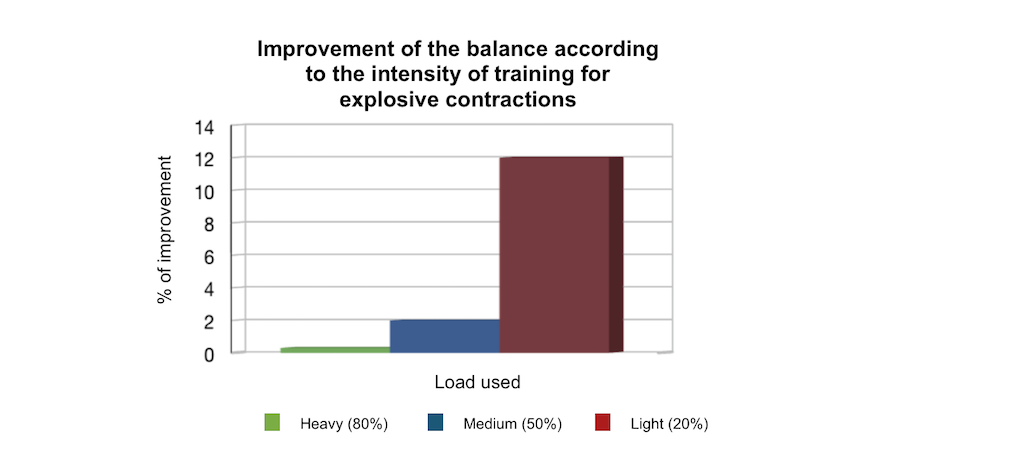
Joint mobility
A wide range of motion in the joints of the knees, hips, back and shoulders allows you to bend, stretch and turn more easily, as many elementary movements that make up many common activities such as walking, bathing, climbing stairs or dressing (1). Since at age 70, the flexibility of inactive people will have decreased by 20 to 30%, it is important to pay special attention to flexibility and the amplitude of the joints. A flexible elder will have less pain in the lower back, will maintain mobility of the joints longer and will develop fewer injuries to them (1).
Cardiovascular system
Aerobic-type activities have very little effect on the development of muscle mass (9). On the other hand, it greatly improves cardiovascular health, blood pressure and lipid profile. They should be done at medium to high intensity, for 30-60 minutes, 4 to 7x / week to reduce the decrease in maximum oxygen consumption that accompanies aging. Important note; if the aerobic activity is of low intensity, the only advantage that one derives is the decrease of the blood pressure, and this, in the already hypertensive individuals.
Circuit training, which consists of performing muscle exercises successively by inserting walking or jogging sequences, is ideal for the elderly.
Prescription of exercises for the elderly
Bodybuilding
Target the following muscle groups: Legs, pectorals, back, arms, shoulders, and abdominals (3). Make multi-joint movements as opposed to uni-articular movements (3). Individuals at higher risk of falling should practice balance exercises 3x / week (7). Make 1 to 3 sets of 8 to 15 repetitions at an intensity between 60 and 80% of its maximum strength and this, 2x / week (5-10).
When it becomes easy to do 15 repetitions, it is time to increase the load in order to solicit the muscle again and to receive all the benefits (6). Include movements with speed when the physical condition lends itself to it.
Cardio
The cardiovascular recommendations are summarized in the following table (9):

In summary
To conclude very succinctly, say that from a musculoskeletal point of view, the 2 major issues for the elderly are:
- Avoid falls
- Maintain autonomy
In the light of what has been said above, the effective means to achieve this are as follows, in their order of importance:
- Strengthen the lower limbs and trunk.
2. Slow down osteoporosis.
3. Develop and maintain balance.
4. Maintain joint mobility and flexibility.
REFERENCES
(1) Avis du comité scientifique de Kino-Québec. 2002. L’activité physique, déterminant de la qualité de vie des personnes de 65 ans et plus. Bibliothèque nationale du Québec.
(2) Centers for Disease Control and Physical activity for every one. How much physical activity do you need?
(3) American College of Sports Medicine, Fit Society Page, summer 2003.
(4) Robert S. Mazzeo, in ACSM, Current Comment, Exercise and the Older Adult.
(5) Darryn S. Willoughby, in ACSM, Current Comment, Exercise and the Older Adult.
(6) National Institut of Aging, National institut of health. Bethesda, MD 2009.
(7) Healthier US Gov. 2008 Physical Activity Guidelines for Americans.
(8) Orr R, de Vos NJ, Singh NA, Ross DA, Stavrinos TM, Fiatarone-Singh MA. Power training improves balance in healthy older adults. J Gerontol A Biol Sci Med Sci. 2006 Jan;61(1):78-85.
(9) ACSM Exercise and Physical Activity for Older Adults. Position Stand, 2009.
(10) Baechle,T.R., Earle,R.W. (2008). Essential of strength training and conditioning,3e éd. Champaign, IL :Human Kinetics.
(11) Agence de santé publique du Canada. 2005. Rapport sur les chutes des aînés au Canada.
(12) Fiatarone et all. 1990. High-intensity strength training in nonagenarians. Effects on skeletal muscle. JAMA. Jun 13;263(22).
(13) Fiatarone et all. 1994. Exercise training and nutritional supplementation for physical frailty in very elderly people. N Engl J Med. 1994 Jun 23;330(25).


